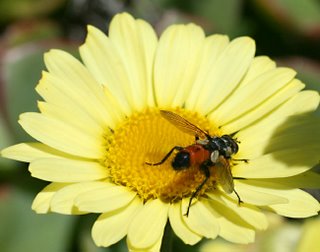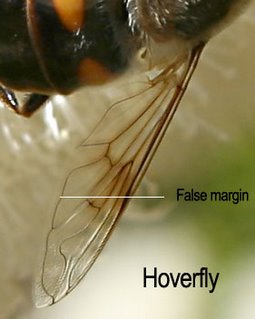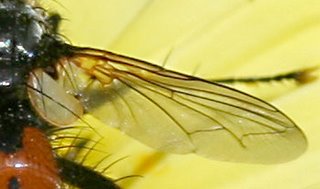
These tiny reed bees (Exoneura sp), are commonly found in the garden quite early in the season and all through summer into autumn. They really are small, hence the dodgy photo, only about 5mm. Obviously of an easy going and opportunistic nature as they are delighted with anything flowering, native or exotic (polylectic).
They are a long tongued bee, in the family Apidae, and enjoy visiting the Hebe flowers especially, where they can get the (very small) lion's share as the thin tubular Hebe flowers are largely inaccessible to honeybees.
Knowing that they like to nest in pithy stems I've carefully pruned everything in the garden so that plenty of likely nest sites are in the offing. Every year they've spurned my efforts with the local species of Kangaroo Paw,
Anigozanthus flavidus, and I've never managed to sight them nesting anywhere. Not even in grasstree flowering stems, which I'm assured are their standard site.
Until this year - and true to their form (in the eastern states they like to nest in Lantana), they've chosen an introduced species, the very beautiful and luckily non-weedy South African
Dierama sp. Every stem diligently left after pruning away last years' very tall fairy fishing rod flowers has been neatly drilled out and swept clean of sawdust, and occupied by one or more resident bees.
Exoneura are one of the semi-social (or semi-solitary, depending on your preference) bees, and two or more may occupy a nest and share chores. The larvae are tended and fed with pollen.
These were actually struggling for possession of this stem, sharing wasn't remotely on their minds. Short of ear tagging the bees I couldn't say which was the rightful possessor of the nest.
The other thing that's different about Exoneura is that they survive the winter, unlike most other native bees. Both the male and female spend the winter in the nest. And the cooler days, by the look of things, as they are only out and about when the temperatures are relatively balmy. So I can afford to get attached to these appealing little characters. Hurrah!
A nice article here
Aussie bees abuzz








